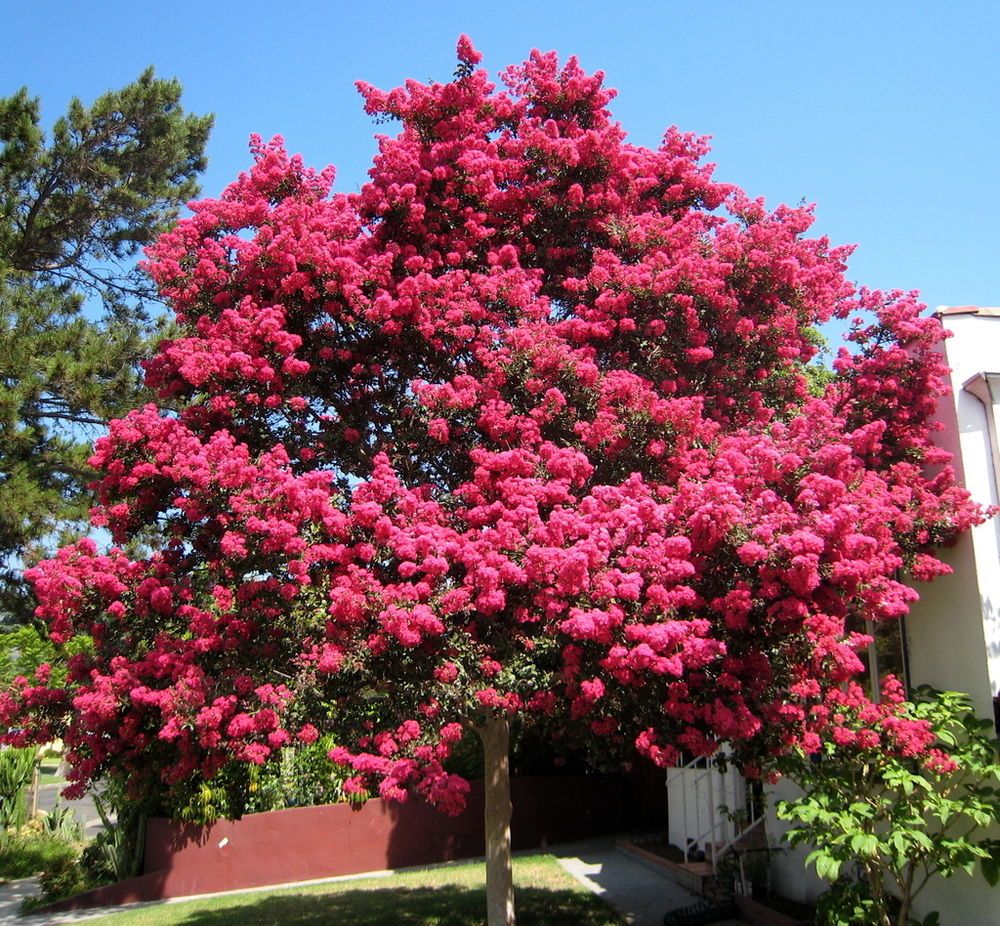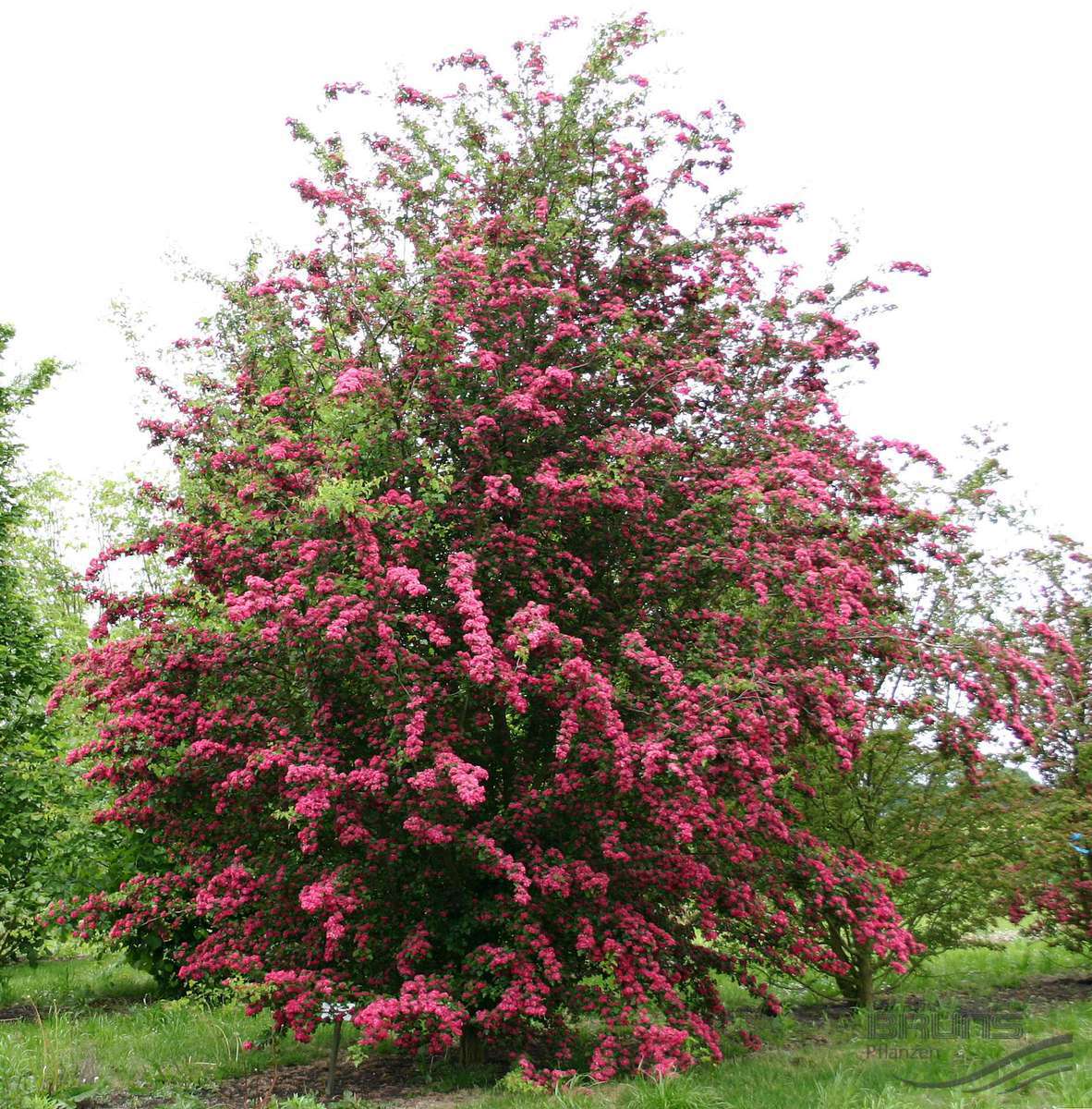Small trees are an option to fill any interior or exterior space with vegetation, where the extension of the land often limits the design of an ideal landscape and you want to be able to combine different textures and colors with small-sized plants. So in this article you can discover what are the Small Trees? We invite you to continue reading.

What are the Small Trees
There is an extensive diversity of small trees that reach heights of less than approximately 12 meters when mature. This condition is what qualifies them within this category and allows them to be part of outdoor gardens, inside the home and other small-sized spaces just by planting them in pots or directly on the ground. In addition, in general terms, they require the necessary care to enjoy their wonderful beauties. Next, we present a very striking variety of these plants.
Horse Chestnut (Aesculos Pavia)
This is a slow-growing, deciduous, small ornamental tree that matures to a height of 4 to 6 meters and a similar width. They work best in shady places especially in hot climates. They require well-drained, acidic, moist soils and should be watered frequently, particularly during dry periods. In spring, depending on the variety, the flowers can be bright red, white or yellow. They produce inedible fruit and are a popular choice for residences as well as parks and other open spaces. They can be fertilized monthly for the first two years and then semi-annually.
Golden Chain Tree (Laburnum X Watereri)
They are characterized by growing between 4 and 7 meters high, sporting an extraordinary green bark, with clover-shaped leaves, and having hanging clusters of bright yellow flowers that make these small trees their main spring attraction. They are also deciduous ornamental plants, which, for their greatest splendor, are best grown in places protected from strong winds, since their branches are somewhat weak. The plant has medium water needs, moist soils and annual fertilization with compost. On the other hand, despite its decorative display, caution should be taken with the seeds as they are toxic.
Mimosa (Albizia julibrissin)
Their average height is 6-12 meters, they are tolerant to heat and drought, although they grow better with constant humidity. They are very tropical in appearance with large leaves, their fragrant thread-like golden yellow flowers give the plant the name silk tree. They are small, highly ornamental trees that are not frost hardy and can thrive in full sun or partial shade, with moist, well-drained soil. With proper pruning techniques, they can be grown in pots.
Papaya (Asimina Triloba)
This type of fruit tree, which can reach a size of 4 to 9 meters high, is generally found in tropical areas. They tolerate being planted in sunny or shady areas. Its fruits are born in clusters that can be consumed in their green or ripe state. Papaya leaves are huge and can be up to 30 centimeters long. The flowers of this tree are a deep shade of dark reddish brown and begin to bloom before the leaves unfurl. This plant tends to reproduce itself, so you have to control its offspring if you do not want further spread.
Witch Hazel (Hamamelis Virginiana)
These are small trees averaging 3 to 6 meters tall, growing in direct sunlight or shade. Witch hazel trees bear furry, citrus-scented flowers in shades of yellow and red. There are several species and varieties that usually flower in late winter before the leaves open, and others put on their show in the fall. They require very little maintenance, but care should be taken to cover the needs of moist soils watered regularly. Also, early spring pruning is recommended if you need to remove damaged portions or shape the plant, which also has medicinal uses.
Serviceberry (Amelanchier arborea)
Serviceberry trees belong to the rose family, and you'll notice the similarities in both their white spring flowers and fruit. Like crabapples and rose hips, the fruits are edible but acidic. And they are very popular with birds. There are several species and varieties of service berry that make excellent landscape plants. Some grow only 2 to 4 meters tall, while others mature around 6 meters. Removing root suckers from your service berry can be an excellent measure to promote a more controlled growth habit of the plant.
Mediterranean fan palm (Chamaerops humilis)
It is one of the most cold-resistant small trees, it is often used to add a tropical element to landscapes as they grow well as houseplants, easily adapting to the conditions of these environments, so if they receive the necessary care they will you can control its height and expansion. They are characterized by having large fan-shaped leaves of a bluish green color, 45 to 60 centimeters long, they grow with several stems and generate flowers in cream-colored clusters and drupe fruits of just 6 millimeters. Hot, sunny days and cool nights are the ideal conditions for this plant.
Japanese Stewartia (Stewartia Pseudocamellia)
The showy white flowers of the Japanese stewartia tree open for several weeks in mid-summer. The bark in mottled shades of orange, red, brown and gray highlights the flowers. It is a very ornamental exemplary tree that grows slowly but can reach heights of over 8 meters. It is low maintenance and all that is needed is moist soil, frequent watering and pruning to shape or remove damaged parts. It generally does not have many pest or disease problems.
Crataegus Laevigata
Within the different small trees to grow in small areas, this deciduous plant grows between 3 to 5 meters in height, and represents an option to incorporate indoors or outdoors to take advantage of its exclusive aspect of natural display with its abundant inflorescence of white flowers between spring and early summer. To then give way to some red fruits only of ornamental interest. They are very resistant to frost and require minimal maintenance.
Saucer Magnolia (Magnolia X Soulangeana)
The distinction of this type of small tree that grows up to 6 or 8 meters tall, is in its delicately fragrant purple and white flowers that usually appear before the leaves unfurl in the spring. The flowers can be 25 centimeters across, giving them their common name of "saucer". Saucer magnolias may need some shaping through frequent pruning. In turn, soil moisture must be kept constant, since these plants do not do well in soils that are too wet or too dry, because drainage and irrigation are important factors to guarantee their healthy growth.
Lemon's tree
The lemon is the most used fruit in all areas, from health to beauty, this tree reaches 4 meters in height. Its cultivation can be done in garden pots or in the ground. It is a very noble plant that not only produces those fruits that can be used even the shells, but its showy white flowers are incredibly fragrant and beautiful throughout the year. They also have shiny dark green leaves. These trees are best planted in early spring in full sun or shade. Additionally, these plants require well-drained soil, regular fertilization, and enough water to keep the soil moist.
fig trees
It is a tree that bears small fruits with a sweet taste and grows to a height of about 3 meters. Fig trees do well in containers because they like their roots to contract, which is exactly what happens to plants grown in containers. Its foliage is attractive enough to offer ornamental value. You can keep it outdoors year-round, but in cooler climates, it's easier to grow it in a pot and move the container to a sheltered location for the winter. They require low maintenance, but you can prune a fig tree to keep it within the limits you've set for it due to space limitations.
Crab Apple (Malus)
The crabapple tree is well-suited for growing and adding color to small yards year-round, averaging just 4 feet tall. They provide a month of spring flowers that attract native pollinators, including bees. The flowers are then followed by dangling clusters of fruit that are popular with birds. Pruning is not always necessary, but can be done as needed in late winter, they require well-draining substrate and be planted in sunny locations.
Crepe Myrtle (Lagerstroemia)
Crepe myrtles can reach heights of 7 to 9 meters tall and require a long, warm growing season. They are noted for their dazzling flowers throughout the summer and showy fall foliage. The flowers bear fruit that are brown in color and persist through winter. For best care, lower branches should be removed to expose the attractive bark. Crepe myrtles bloom on new wood and should be pruned in late winter. They do best when in neutral to slightly acidic soil with good drainage.

If you liked this article on What are Small Trees, we invite you to read other articles that contain topics of interest in the following links:
